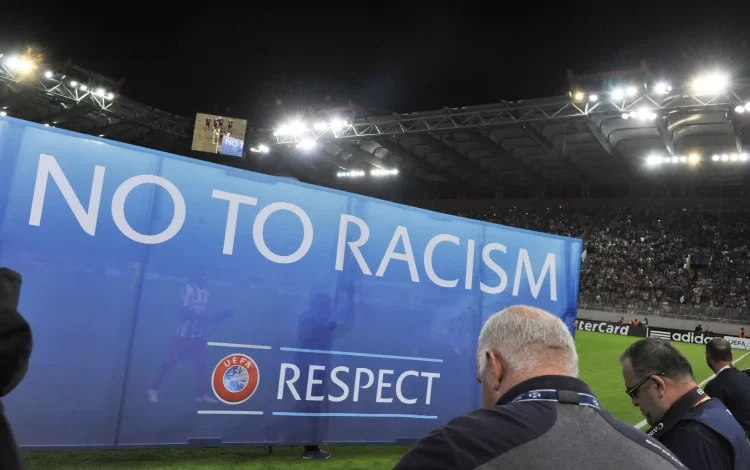
Referee Signals FIFA Anti-Racism Gesture After Antonio Rüdiger Alleges Abuse in Club World Cup Match
The Incident During Real Madrid's 3-1 Win Over Pachuca Has Raised Questions About FIFA's Handling of its New Anti-Racism Protocol
An intense match between Real Madrid and Mexico’s CF Pachuca at the FIFA Club World Cup took a serious turn in the final minutes when Antonio Rüdiger reported verbal racism on the field. The German defender approached referee Ramon Abatti after a confrontation with Pachuca’s captain, Gustavo Cabral.
With Real Madrid already ahead 3-1 at the Bank of America Stadium in Charlotte, North Carolina, the referee made a cross-armed gesture, signaling the application of FIFA’s anti-racism protocol. The visual signal, introduced in 2024, allows players, coaches, or officials to alert the referee to discriminatory behavior during a match.
Cabral Denies Racial Abuse, Says Words Were Misunderstood

Following the match, Cabral explained that his words were not intended to offend racially. He said the phrase he used was common Argentine slang, typically meant to question an opponent’s courage during a heated exchange.
Cabral stated that he had no prior incidents of similar accusations and that the argument was part of a routine in-game disagreement. “It was a fight, we collided, I told him what we say all the time,” Cabral told reporters. His comments, though intended as ordinary banter by local standards, were interpreted differently in an international setting.
Manager and Referee Responses Confirm Ongoing Inquiry
Real Madrid’s manager Xabi Alonso addressed the situation in his post-match press conference, noting that the team supported Rüdiger and that the appropriate process had begun. “Toni has told us something. The protocol was triggered. There is an investigation ongoing. We support him,” Alonso said.
FIFA has yet to make a formal statement regarding the incident but is expected to review the referee’s match report. The governing body has procedures in place to evaluate allegations of discriminatory behavior, which may include match footage, referee accounts, and interviews with players involved.
FIFA’s introduction of the X-gesture was meant to offer a visible and immediate response to incidents of racism. However, the surrounding tournament has seen uneven implementation of anti-racism messaging.
Unlike previous competitions, FIFA chose not to display any overt anti-discrimination messages across stadiums during the early stages of the 2025 Club World Cup in the United States. This decision differed from recent tournaments where slogans and campaigns were visible throughout.
Political Context May Be Shaping Visibility
After criticism from human rights groups, FIFA broadcast a short anti-racism video before just one match—between Manchester City and Wyad AC—to mark the International Day for Countering Hate Speech. The limited use of such messaging has led to questions about how committed the organization remains to these efforts.
While FIFA has not directly commented on why its anti-racism campaign was scaled back during this tournament, some observers believe that recent political pressures in the U.S. may have played a role. In the current climate, where diversity and inclusion initiatives face increased scrutiny, global sports organizations may be adjusting their public messaging.
Critics argue that this approach undercuts the message that racism has no place in football. If symbolic gestures are not backed by consistent action and communication, they risk being seen as superficial.
A Player Familiar With Discrimination Incidents
Rüdiger has encountered racist abuse multiple times in his career. During his stints with AS Roma, Chelsea, and now Madrid, he has spoken publicly about the challenges he has faced both on and off the pitch.
While this latest complaint is still under review, it reflects the broader pattern where players from underrepresented backgrounds continue to report discriminatory behavior. In many cases, outcomes remain inconclusive, even after formal investigations.
FIFA’s next move depends on the outcome of its internal review, including whether any disciplinary measures will be taken. As the protocol gains visibility, this case could shape how effectively it functions in future incidents.
The incident also invites a larger conversation about how international football manages cultural differences, maintains accountability, and ensures that its anti-racism policies are not only symbolic, but enforceable.




